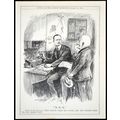Veronese, Paolo - The Adoration of the Magi - art postcard
- Condition : Used
- Dispatch : 2 Days
- Brand : None
- ID# : 138251244
- Quantity : 1 item
- Views : 233
- Location : United Kingdom

- Seller : justthebook (+1703)
- Barcode : None
- Start : Fri 10 Apr 2015 09:13:06 (BST)
- Close : Run Until Sold
- Remain : Run Until Sold
More Listings from This Seller view all
Seller's Description
- Art Postcard
- Work of art title: The Adoration of the Magi (detail)
- Artist (if known): Paolo Veronese
- Media or other details: painting
- Publisher / Gallery: National Gallery, London
- Postally used: no
- Stamp & postmark details (if relevant): na
- Size: modern
- Notes & condition details:
NOTES:
Size: 'Modern' is usually around 6in x 4in / 'Old Standard' is usually around 5 1/2in x 3 1/2in. Larger sizes mentioned, but if you need to know the exact size please ask.
All postcards are not totally new and are pre-owned. It's inevitable that older cards may show signs of ageing and use, particularly sent through the post. Any faults other than normal ageing are noted.
Stock No.: A622
------------------------------------------------
Postage & Packing:
Postage and packing charge should be showing for your location (contact if not sure).
No additional charges for more than one postcard. You can buy as many postcards from me as you like and you will just pay the fee above once. Please wait for combined invoice. (If buying postcards with other things such as books, please contact or wait for invoice before paying).
Payment Methods:
UK - PayPal, Cheque (from UK bank) or postal order
Outside UK: PayPal ONLY (unless otherwise stated) please. NO non-UK currency checks or money orders (sorry).
NOTE: All postcards are sent in brand new stiffened envelopes which I have bought for the task. These are specially made to protect postcards and you may be able to re-use them. In addition there are other costs to sending so the above charge is not just for the stamp!
I will give a full refund if you are not fully satisfied with the postcard.
----------------------------------------------
Text from the free encyclopedia WIKIPEDIA may appear below to give a little background information:
*************
Paolo Caliari, known as Paolo Veronese (1528 – 19 April 1588) was an Italian Renaissance painter based in Venice, most famous for large history paintings of both religious and mythological subjects, such as The Wedding at Cana and The Feast in the House of Levi. With Titian, who was at least a generation older, and Tintoretto, ten years older, he was one of the ""great trio that dominated Venetian painting of the cinquecento"" or 16th-century late Renaissance.[1] Veronese is known as a supreme colorist, and after an early period with Mannerist influence turned to a more naturalist style influenced by Titian.[2]
His most famous works are elaborate narrative cycles, executed in a dramatic and colorful style, full of majestic architectural settings and glittering pageantry. His large paintings of biblical feasts, crowded with figures, painted for the refectories of monasteries in Venice and Verona are especially famous, and he was also the leading Venetian painter of ceilings.
He has always been appreciated for ""the chromatic brilliance of his palette, the splendor and sensibility of his brushwork, the aristocratic elegance of his figures, and the magnificence of his spectacle"", but his work has been felt ""not to permit expression of the profound, the human, or the sublime"", and of the ""great trio"" he has often been the least appreciated by modern criticism.[1] Nonetheless, ""many of the greatest artists ... may be counted among his admirers, including Rubens, Watteau, Tiepolo, Delacroix and Renoir"".[3]
Veronese took his usual name from his birthplace of Verona, then the largest possession of Venice on the mainland. The census in Verona attests that Veronese was born sometime in 1528 to a stonecutter, or spezapreda, named Gabriele, and his wife Catherina. He was their fifth child.[4] It was common for surnames to be taken from a father's profession, and thus Veronese was known as Paolo Spezapreda. He later changed his name to Paolo Caliari, because his mother was the illegitimate daughter of a nobleman called Antonio Caliari.[5] His earliest known painting is signed ""P. Caliari F., ""the first known instance in which he used this surname"", and after using ""Paolo Veronese"" for several years in Venice, after about 1575 he resumed signing his paintings as ""Paolo Caliari"".[5] He was often called ""Paolo Veronese"" before the last century to distinguish him from another painter from Verona, ""Alessandro Veronese"", now known as Alessandro Turchi (1578–1649).[6]
By 1541, Veronese was apprenticed with Antonio Badile, who was later to become his father-in-law, and in 1544 was an apprentice of Giovanni Francesco Caroto; both were leading painters in Verona.[5] An altarpiece painted by Badile in 1543 includes striking passages that were most likely the work of his fifteen-year-old apprentice; Veronese's precocious gifts soon surpassed the level of the workshop, and by 1544 he was no longer residing with Badile.[7] Although trained in the culture of Mannerism then popular in Parma, he soon developed his own preference for a more radiant palette.[8]
In his late teens he painted works for important churches in Verona, and in 1551 he was commissioned by the Venetian branch of the important Giustiniani family to paint the altarpiece for their chapel in the church of San Francesco della Vigna, which was then being entirely rebuilt to the design of Jacopo Sansovino. In the same year he worked on the decoration of the Villa Soranzo near Treviso, with his fellow Veronese Giovanni Battista Zelotti and Anselmo Canneri; only fragments of the frescos remain, but they seem to have been important in establishing his reputation. The description by Carlo Ridolfi nearly a century later mentions that one of the mythological subjects was The Family of Darius before Alexander, the rare subject in Veronese's grandest treatment of secular history, now in the National Gallery, London.[9]
In 1552 Cardinal Ercole Gonzaga, great-uncle of the ruling Guglielmo Gonzaga, Duke of Mantua, commissioned an altarpiece for Mantua Cathedral (now Caen, France), which Veronese painted in situ. He doubtless used his time in Mantua to study the ceilings by Giulio Romano; it was a painter of ceiling frescos that he would initially make his mark in Venice, where he based himself permanently from the following year.[10]
Veronese moved to Venice in 1553 after obtaining his first state commission, ceilings in fresco decorating the Sala dei Cosiglio dei Dieci (the Hall of the Council of Ten) and the adjoining Sala dei Tre Capi del Consiglio in the Doge's Palace, in the new rooms replacing those lost in the fire of 1547. His panel of Jupiter Expelling the Vices for the former is now in the Louvre. He then painted a History of Esther in the ceiling for the church of San Sebastiano (1556–57). It was these ceiling paintings and those of 1557 in the Marciana Library (for which he was awarded a prize judged by Titian and Sansovino) that established him as a master among his Venetian contemporaries.[11] Already these works indicate Veronese's mastery in reflecting both the subtle foreshortening of the figures of Correggio and the heroism of those by Michelangelo.[12]
By 1556 Veronese was commissioned to paint the first of his monumental banquet scenes, the Feast in the House of Simon, which would not be concluded until 1570. Owing to its scattered composition and lack of focus, however, it was not his most successful refectory mural.[13] In the late 1550s, during a break in his work for San Sebastiano, Veronese decorated the Villa Barbaro in Maser, a newly finished building by the architect Andrea Palladio. The frescoes were designed to unite humanistic culture with Christian spirituality; wall paintings included portraits of the Barbaro family,[14] and the ceilings opened to blue skies and mythological figures. Veronese's decorations employed complex perspective and trompe l'oeil, and resulted in a luminescent and inspired visual poetry.[15] The encounter between architect and artist was a triumph.[16]
The Wedding at Cana, painted in 1562–1563, was also collaboration with Palladio. It was commissioned by the Benedictine monks for the San Giorgio Maggiore Monastery, on a small island across from Saint Mark's, in Venice. The contract insisted on the huge size (to cover 66 square meters), and that the quality of pigment and colors should be of premium quality. For example, the contract specified that the blues should contain the precious mineral lapis-lazuli.([17]) The contract also specified that the painting should include as many figures as possible. There are a number of portraits (including those of Titian and Tintoretto, as well as a self-portrait of Veronese) staged upon a canvas surface nearly ten meters wide. The scene, taken from the New Testament Book of John, II, 1–11, represents the first miracle performed by Jesus, the making of wine from water, at a marriage in Cana, Galilee. The foreground celebration, a frieze of figures painted in the most shimmering finery, is flanked by two sets of stairs leading back to a terrace, Roman colonnades, and a brilliant sky.[15]
In the refectory paintings, as in The Family of Darius before Alexander (1565–1570),[18] Veronese arranged the architecture to run mostly parallel to the picture plane, accentuating the processional character of the composition. The artist's decorative genius was to recognize that dramatic perspectival effects would have been tiresome in a living room or chapel, and that the narrative of the picture could best be absorbed as a colorful diversion.[19] These paintings offer little in the representation of emotion; rather, they illustrate the carefully composed movement of their subjects along a primarily horizontal axis. Most of all they are about the incandescence of light and color.[20] The exaltation of such visual effects may have been a reflection of the artist's personal well-being, for in 1565 Veronese married Elena Badile, the daughter of his first master, and by whom he would eventually have a daughter and four sons.[20]
Also painted between 1565–70 is his Madonna and Child with St. Elizabeth, the Infant St. John the Baptist, and St. Justina in the Timken Museum of Art, San Diego. St. Justina, a patroness of Padua and Venice, is at the right with the Blessed Virgin Mother and the Christ child in the center. In contrast to Italian works of a century earlier the infant is rendered convincingly as an infant. What makes one stop and take notice in this painting is the infant's reaching out to St. Justina, since a baby of this age would normally limit his gaze to his mother. Completing the work is St. Elizabeth, the cousin of Mary and mother of St. John the Baptist, located on the left. The artist delicately balances the forms of the extended Holy Family and renders them using a superb balance of warm and cool colors.
type=printed postcards
theme=artists signed
sub-theme=art
number of items=single
period=1945 - present
postage condition=unposted
Listing Information
| Listing Type | Gallery Listing |
| Listing ID# | 138251244 |
| Start Time | Fri 10 Apr 2015 09:13:06 (BST) |
| Close Time | Run Until Sold |
| Starting Bid | Fixed Price (no bidding) |
| Item Condition | Used |
| Bids | 0 |
| Views | 233 |
| Dispatch Time | 2 Days |
| Quantity | 1 |
| Location | United Kingdom |
| Auto Extend | No |




 for 1 item(s)
for 1 item(s)


![Van Gogh, Vincent - Sunflowers [4th] - National Gallery art postcard c.1960s](https://pic.ebid.net/upload_medium/2/7/0/1424731301-1918-150.jpg)












